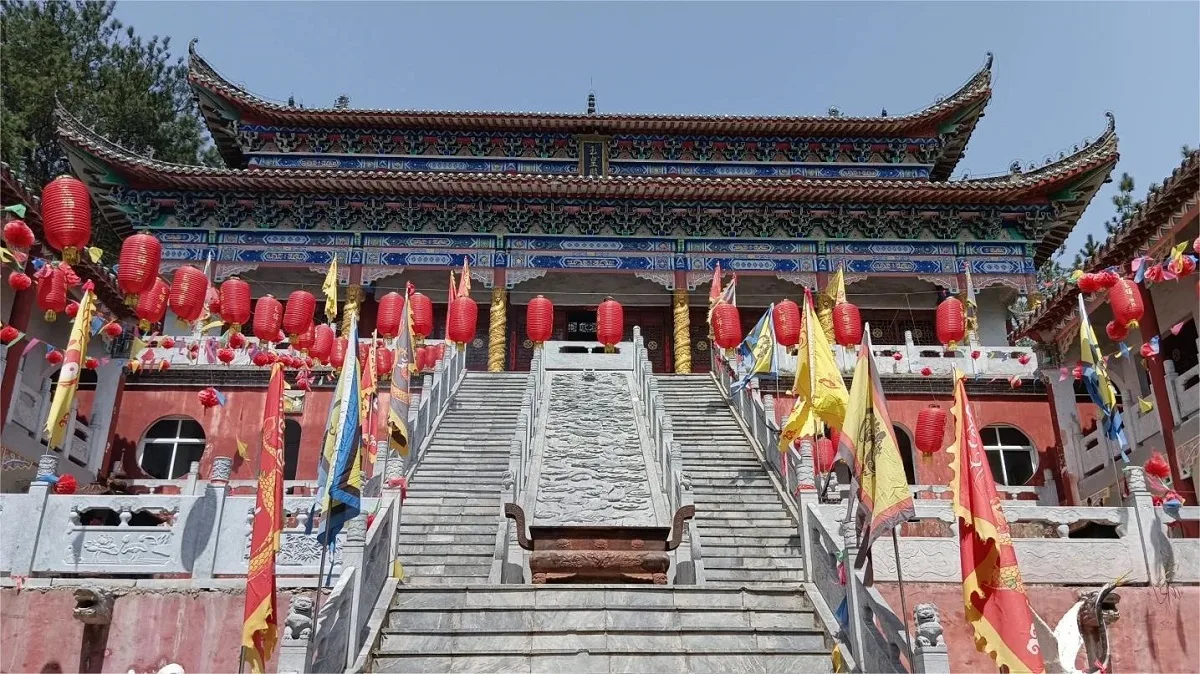Baishui Temple (白水寺), situated atop Lion Mountain in Zaoyang City, Hubei Province, holds a significant historical and cultural legacy. The village of Baizhu at the foot of the mountain is renowned as the hometown of Emperor Guangwu of the Eastern Han Dynasty, Liu Xiu. Originally known as Shanlin Temple, it was renamed Baishui Temple when the water from a well Liu Xiu drank from inside the temple turned from black to white, a miraculous transformation. Liu Xiu, post his ascension to the throne, constructed the “Four Kin High Temple” here and visited five times to pay homage to his ancestors. After Liu Xiu’s passing, his son Liu Zhuang and grandson Liu Dan expanded the temple into the “Liu Xiu Ancestral Shrine,” also known as the “Liu Xiu Temple,” atop the foundation of the Four Kin High Temple. Baishui Temple thus stands as a testament to both spiritual reverence and historical reverence for Liu Xiu and his lineage.
Table of Contents
Basic Information
| Estimated Length of Tour | 2 hours |
| Ticket Price | 50 RMB |
| Opening Hours | 8.00 – 17.30 |
| Telephone Number | 0086-0710-6729639 |
Location and Transportation
Baishui Temple is situated atop Lion Mountain in Wudian Town, Zaoyang, Xiangyang City, Hubei Province, China. Travelers can first take a high-speed train to Zaoyang and then transfer to a taxi to the temple.
Highlights of Baishui Temple
Baishui Stele Corridor

The Baishui Stele Corridor is a prominent feature, nestled in the southern valley of Lion Mountain. Covering an area of over 3000 square meters with a building area exceeding 1000 square meters, its architecture is dignified and elegant, adorned with flying eaves and intricate corridors. Within the corridor courtyard stand four replicated ancient steles, bearing more than 400 inscriptions. These inscriptions, engraved by contemporary calligraphers, blend the literary works of renowned poets and scholars from past and present with the exquisite craftsmanship of engravers, creating a cultural landscape that embodies the heritage of Emperor Guangwu’s hometown.
Li Hua Flower Garden

Adjacent to the Baishui Stele Corridor, Li Hua Flower Garden spans over 40 acres. Named after Liu Xiu’s wife Yin Li Hua, the garden primarily features peonies while also showcasing a variety of precious flowers such as cherry blossoms, peach blossoms, plum blossoms, osmanthus, apricot blossoms, rhododendrons, and ginkgo trees. The garden offers a perpetual greenery and a fragrant ambiance throughout the year. It complements the grandeur of the Hundred Dragon Wall, the elegance of the Jibiguan Garden, the quaint charm of the Huilong Pavilion, the ingenuity of the Shengtong Bridge, and the picturesque beauty of the Peony Pavilion.
Guangwu Shrine

Guangwu Shrine, located on the eastern side of Lion Mountain, is a newly constructed shrine dedicated to commemorating Emperor Guangwu of Han. Commencing construction in September 1997, the shrine encompasses a cluster of buildings covering an area of 3300 square meters, with a building area of 1250 square meters. Comprising the Guangwu Main Hall, the Twenty-Eight Constellations Exhibition Hall, the Mountain Gate, and the Reversed Seat, the shrine is strategically nestled against steep cliffs and lush greenery, harmonizing with the natural terrain.
Baishui Lake Water Recreation Area

Baishui Lake Water Recreation Area covers a vast expanse of 800 acres, with 500 acres of water surface. The lake mirrors the azure sky, offering winding paths and secluded spots. To the east of the lake, a forest of Chinese fir trees thrives, often attracting flocks of cranes. The interplay of the lake’s shimmering waters and the surrounding mountains creates a picturesque landscape. Notable structures within the area include the Crane Pavilion and the Water Recreation Center.


